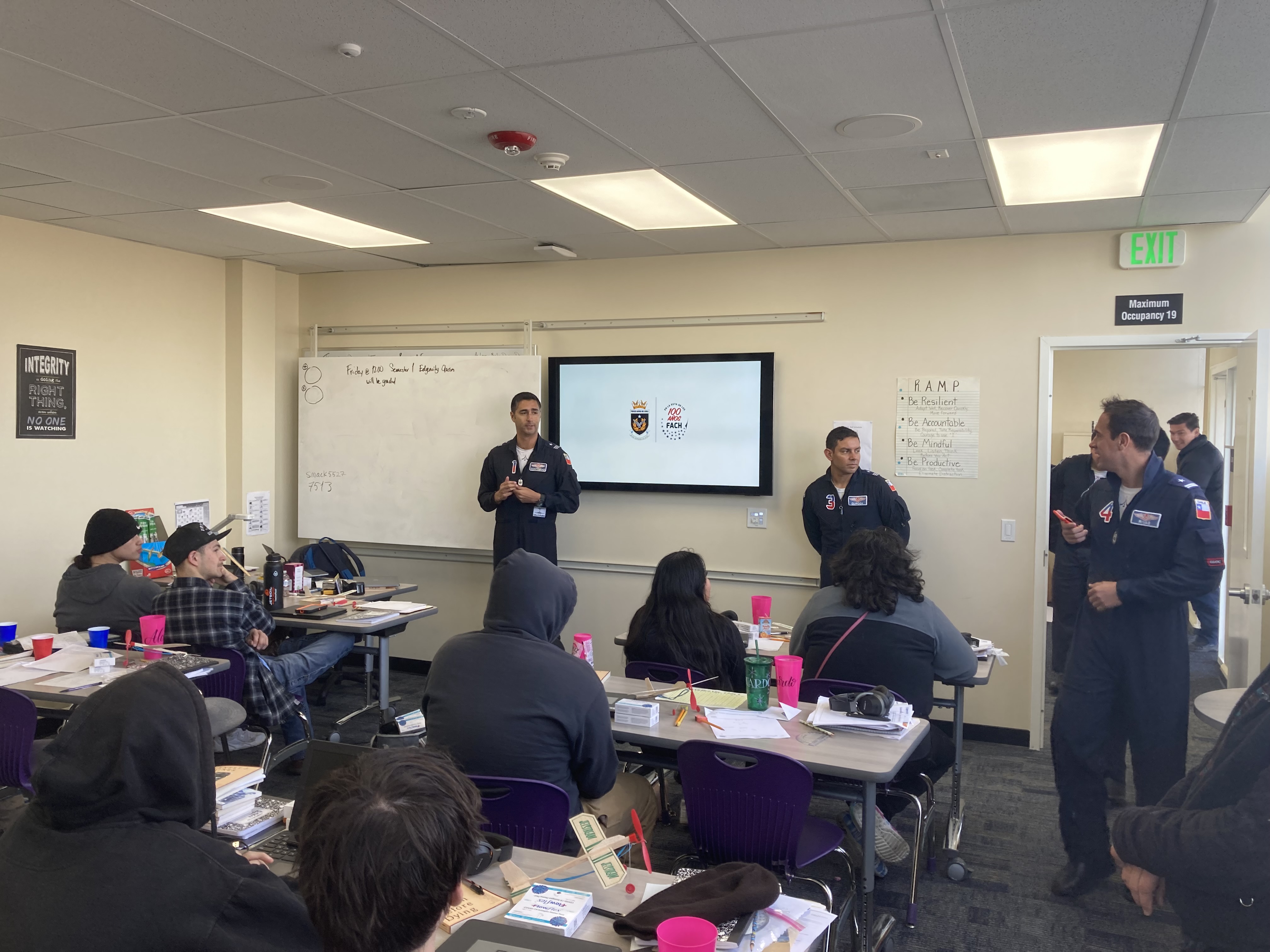
In a classroom inside a 1940s-era hangar at Salinas Municipal Airport, educator John Horvath is teaching his students the basics of math, English, science … and aviation. Horvath teaches at the Bob Hoover Academy at Monterey County Office of Education (MCOE), an alternative high school and community school focused on supporting students who have had difficulty in traditional school environments and providing them with the unique opportunity to take to the skies and learn how to fly.

Horvath teaches Common Core subjects in the morning
“I teach the students the Airline Owners and Pilots Association (AOPA) high school curriculum. It’s like Ground School lite,” says Horvath, a member of Monterey County Office of Education Teachers Association (MCOETA). “We learn about the basics of flight — lift, drag, forces of flight — all the things you need to obtain a pilot’s license.”
In a modified independent study environment, Horvath takes his 20 students through Common Core math, English language arts and science lessons every morning with flight school starting after lunch. The students split into two groups: one with Horvath and the other with an instructor/mechanic to work on actual airplanes in the hangar, where they are currently rebuilding a Cessna. The unique alternative/community/ flight school is the only one of its kind in California and quite possibly the nation.

Guests have included members of a Chilean Air Force Acrobatic Team.
“Almost every day, we have students flying in air and in our simulator on site,” Horvath says, noting that one of his students completed a solo flight in December. “If I had this opportunity when I was young, I would’ve been all over it.”
While Horvath does not yet have his pilot’s license (students fly with a qualified instructor), he has extensive experience teaching in alternative school environments, working to make connections with students who need additional support and guidance at continuation schools, court schools and in Juvenile Hall. He says he always wanted to work with the innovative program at Hoover, and finally got the opportunity three years ago when MCOE wanted to increase rigor in what was previously called the Sea Air Fire Earth (SAFE) Flight program and asked him to join the team. This is his first year teaching in person after teaching remotely during the COVID-19 pandemic.
“COVID wiped us out, so we were struggling for enrollment, but now we have a waitlist,” he says.
Learning how to fly is a compelling incentive for his students, many of whom have had challenging lives and have bounced around through different programs and learning environments before landing in Horvath’s classroom. Many become interested in flying quickly, putting extra effort into their traditional assignments to get as much time as possible learning about and taking part in the wonder of flight. Horvath says it’s amazing to witness the transformation in students.
“These kids have been kicked out or dropped out of every school they’ve attended,” he says. “This place gives them hope, and that’s a pretty powerful thing to see.”
While Horvath works every day to help his students learn and grow, he also spends time as a peer of sorts, learning aviation and flight lessons as he works to earn his pilot’s license.
“Usually as teachers we know the material, but I’m learning to fly alongside these students. It’s always been a lifelong dream of mine. We’re experiencing it together and it’s really bonding,” Horvath says, and then refers to himself: “Some students have more experience, so they get to teach too — that’s really powerful.”
The Discussion 0 comments Post a Comment